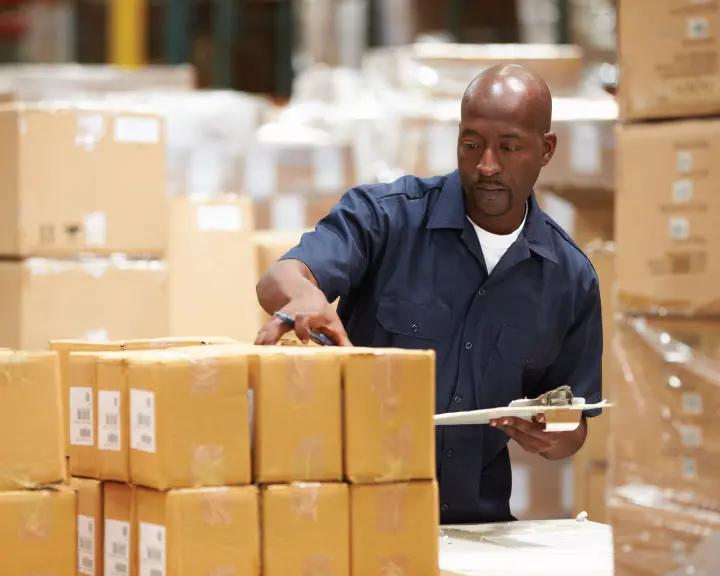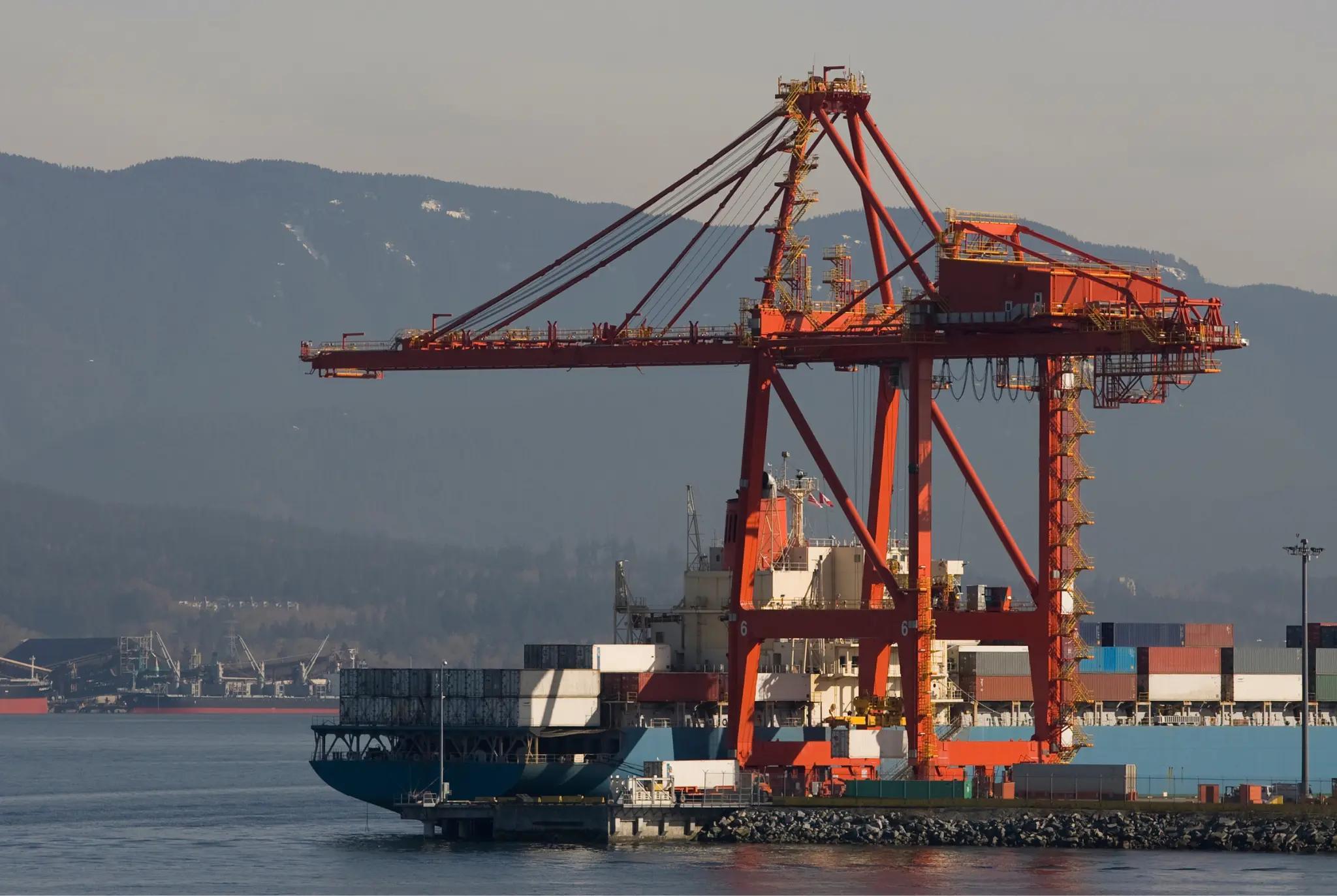We've completed logistics and supply chain automation projects in weeks that our customers were told would take months. We finish integrations fast, freeing up resources to focus on innovation and service without bogging down internal IT teams.
Logistics Automation Software
The driving technological advancements of the digital era have taken the logistics industry by storm, and since there are few signs that improvements in technology are slowing down, logistics organizations must adapt and work to integrate new tech into their daily operations or risk being outmaneuvered by the competition. One of the most revolutionary changes to the logistics industry was the development and implementation of logistics automation software. With logistics automation software, logisitcs service providers are able to differentiate their services in a saturated market.
According to a McKinsey & Company report, “Many operations could be automated by 2030, as artificial intelligence takes over the many repetitive activities that logistics companies perform.” Automated logistics systems – not unlike Chain.io data automation – are shaping the industry’s daily operations already. Additionally, there are several new logistics technologies that are currently being developed and that number is likely going to continue to grow as more and more logistics companies make the transition toward greater implementation of automated practices.
From shippers, logistics service providers, and manufacturers down to consumers at home making purchases by way of eCommerce applications on their mobile devices – every entity involved in supply chain logistics has become enmeshed in a desire for greater efficiency, more standardized automation practices, and more rapid deliveries. As consumer expectations continue to intensify, industry leaders may find themselves in unique positions. Will investments in automation help streamline the process and make it more efficient, or will a newer technology be unveiled in a couple of years, rendering your big investment virtually worthless? Due to this uncertainty, many small- and medium-sized organizations within logistics and supply chain applications are unwilling to make sizeable investments in automating their infrastructure.
However, companies that strive to continue providing the best possible service at an affordable rate are poised to cultivate a robust value proposition. Positioning your organization to make the most of new and developing automation technologies can provide a feasible pathway forward even amid global economic uncertainty and turmoil within the logistics industry and along the supply chain.
Logistics Automation Examples
Automation in transport industry processes aims to streamline operations while making work safer and more efficient for human beings. There are many aspects of the logistics industry that are prime opportunities for automation developments – from software to robotics and everything in between. Some logistics automation examples may include things like logistics API, supply chain data automation, and more.
Supply chain APIs (application programming interface), for instance, enable multiple parties to access and transmit shipping information by utilizing a cloud-based application capable of facilitating the exchange of information. Logistics companies are also increasingly relying on artificial intelligence as well as machine learning in order to manage inventory and storage space more efficiently, but also to optimize other stages of the process like distribution, recovery, delivery, and more.
Automated warehouse examples may make use of automated warehouse picking methods, which may involve a completely robotic or semi-robotic system designed to make warehouses function more effectively. These kinds of automated processes generally work alongside human beings in order to ensure that picking and packing are optimized, safety protocols are all adhered to, and substantially increase picking rates. By developing automated and semi-automated solutions in warehouses, organizations can reduce the potential risk for human error and other setbacks that slow down the process and potentially cause delays or missed deadlines further along the supply chain.
There are dozens of benefits to automated warehouse picking and other efforts to automate processes within the logistics industry. First and foremost, automated processes make things happen more quickly. Warehouse robots are designed to move across warehouse facilities much faster than human beings are capable of – not only that, but they can also operate at all hours with only temporary breaks for upkeep and maintenance. Additionally, many automated systems are relatively simple and easy to learn; warehouse teams can adapt quickly and increase productivity when working alongside automated systems and specialized robots.
Software for Logistics Management
There are a variety of different software solutions that can be helpful for managing supply chain logistics matters. Whether you are looking for logistics management software, online logistics software, transportation management software, or something in between – there is software for logistics management that can help address your company’s specific needs.
Software can prove useful in many different ways for logistics management. By offering a centralized location for order entry, tracking, planning, invoicing, and more, your clients and other third-party liaisons can access any necessary, relevant information with only a few clicks. From purchasing to the delivery, logistics automation software can provide your business with increased visibility and accountability which can reduce the likelihood of human error, decrease late or missed shipments, and help maintain compliance.
Logistics Management Tools
Logistics management tools can provide a wide array of benefits all along the supply chain process. Supply chains are much more complicated than shipping goods from point A to point B – accountants and bookkeepers are responsible for keeping track of accounts and records, and buyers and receivers must both be in communication to ensure that deliveries are made on time and at the right destination, and so on.
There are countless in-between steps amidst the larger picture, which is why logistics software programs can prove invaluable – especially logistics software for small businesses. Logistics software providers may provide logistics software for trucking enterprises, accounting software for other logistics companies, and more. If there is a repetitive, menial aspect at any level of your business, the chances are that an automated system or software could make that process more efficient and less prone to errors.
Effectively managing your company’s logistics requires a keen eye and attention to detail, even on the warehouse floor. Are there robotic solutions that could help streamline picking processes? Is there software your company could integrate into its systems to help improve accountability and supply chain visibility? The answers to these types of questions can make the difference between a company that survives the technological revolution and one that doesn’t.
Robotics and Automation in Logistics
Robots and automation in logistics may go together like peas and carrots, although there are numerous different types of logistics robots and different purposes they fulfill all along the logistics supply chain from end to end. While some may claim robotics have a proven ROI, it’s important to invest in robotics that could feasibly work alongside existing systems or within the circumstances and capabilities unique to your organization.
Robots in logistics examples may include simple robots like robotic arms, which are useful for sorting purposes and assembly lines. Automated guided vehicles (AGVs) can help with loading and unloading carriers and can sort and store items without a human operator. Even DHL robotics in logistics can be useful in certain applications – they offer a range of robotic picking machines that are currently in wide use across Europe, the United Kingdom, and the United States.
An automated logistics company likely makes use of robotics in logistics wherever possible; as robotics in supply chain, applications continue to advance and become more capable of streamlining processes, the logistics robots market will continue to flourish. Depending on your facilities and the type of freight your organization ships, there are likely a variety of potential robotics solutions that could streamline operations within your company as well.
Benefits of Automation in Supply Chain
There are numerous logistics opportunities as technology continues to drive evolution and innovation in supply chains around the globe. One oft-overlooked benefit of automated initiatives within the supply chain industry is the ability to increase the flexibility of operations. More traditional automation methods (like big, bulky robots and older conveyor systems) can be expensive and difficult to manage effectively. Newer systems and smaller, more agile robots, on the other hand, are generally much more affordable and can work much more efficiently than their predecessors.
The benefits of automation in supply chain industries are quite evident – from Chain.io to increased data integrity and better supply chain visibility, a digital supply chain can help organizations at every level of the process. In addition to greater efficiencies, automated systems – especially robotics technologies – are generally much safer than relying on human beings to flawlessly manage warehouse inventories. Robots are required to meet OSHA and ANSI standards and can help reduce the chances of an accident or incident which may result in injured laborers.
Other benefits include decreased operational costs, improved shipping, and tracking accuracy, increased productivity and quicker turnarounds, and more. Investing even in a modest supply chain visibility software can help your organization integrate more fluidly with larger suppliers. As more and more supply chain organizations and logistics companies find ways to automate their processes, they continue to save time, improve compliance, and drive smaller, less competitive organizations out of business.
As automation efforts continue to improve and replace outdated, obsolete systems, supply chain efficiency will continue to increase. This, in turn, will likely continue to drive customer expectations up. By developing a system that integrates the best of human ingenuity alongside the best machine learning and artificial intelligence has to offer, supply chain and logistics enterprises can expect to see improved workflows and even greater volumes of inventory and goods moving through your organization’s warehouses, delivery trucks, shipping containers, and more.







